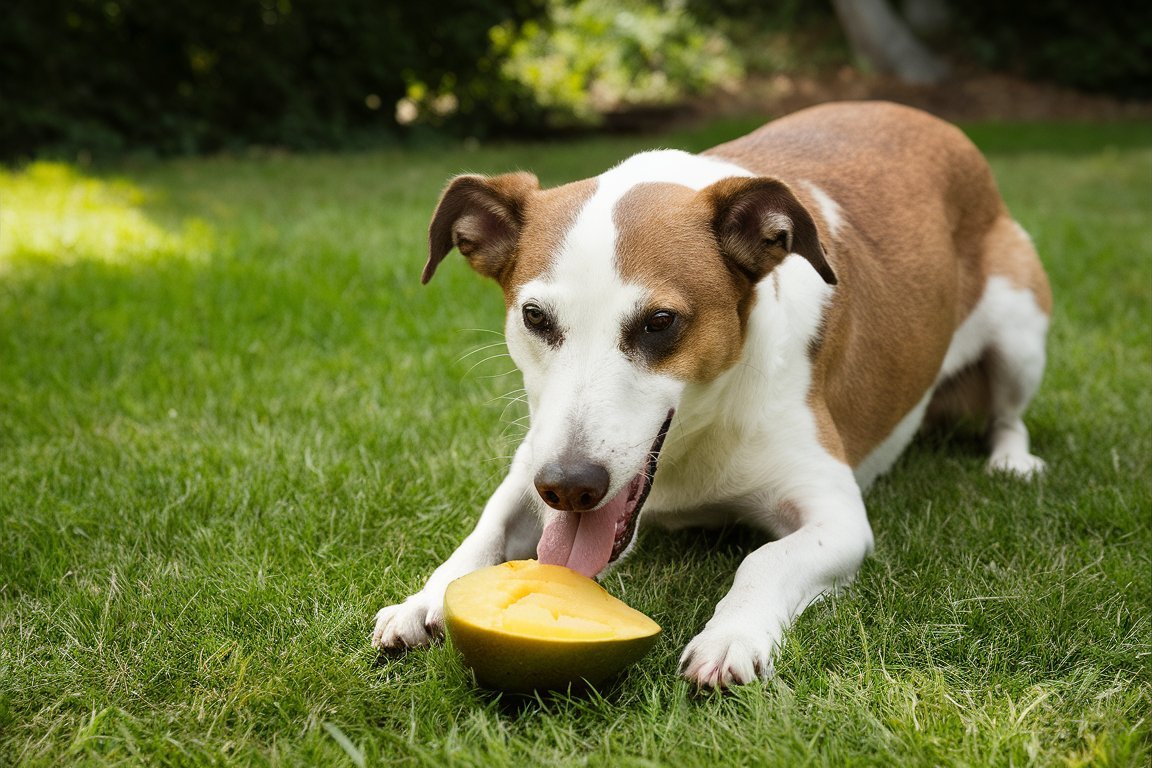Can Dogs Eat Mango? A Comprehensive Guide for Dog Owners
If you’re a dog owner, you know how tempting it is to share your snacks with your furry friend. Whether it’s a piece of fruit, a bite of your sandwich, or a spoonful of ice cream, those big puppy eyes make it hard to say no. But not all human foods are safe for dogs. One question that often comes up is, can dogs eat mango? The short answer is yes, but with some important caveats. Let’s dive into the details to help you understand how to safely share this tropical treat with your dog.
Why Mango?
Mangoes are a sweet, juicy fruit that many people love. They are rich in vitamins A, B6, C, and E, as well as fiber and antioxidants. These nutrients can be beneficial for humans, but what about for dogs? Mangoes offer some health benefits for dogs too. The vitamins and fiber in mangoes can contribute to a healthier coat, better digestion, and even improved vision.
The Nutritional Benefits of Mangoes for Dogs
- Vitamins and Minerals: Mangoes are packed with essential vitamins that can help boost your dog’s immune system. Vitamin A is great for their eyes, while vitamin C acts as an antioxidant to fight off free radicals. Vitamin B6 is essential for brain development and function, and vitamin E can help keep your dog’s skin and coat healthy.
- Fiber: Mangoes are high in fiber, which is excellent for your dog’s digestion. If your dog occasionally suffers from constipation or other digestive issues, the fiber in mangoes can help regulate their bowel movements.
- Antioxidants: The antioxidants in mangoes can help reduce inflammation and improve overall health. They work by neutralizing free radicals in your dog’s body, which can lead to various health issues if left unchecked.
How to Safely Feed Mango to Your Dog
While mangoes can be a tasty and healthy treat for your dog, it’s essential to feed them correctly to avoid any potential risks. Here’s a step-by-step guide on how to safely share mango with your dog:
1. Choose a Ripe Mango
Make sure the mango you’re offering to your dog is ripe but not overripe. A ripe mango is soft and juicy, making it easier for your dog to chew and digest. Overripe mangoes can be mushy and may contain more sugar, which is not ideal for dogs.
2. Peel the Mango
The skin of a mango is tough and difficult to digest. It can also pose a choking hazard, especially for smaller dogs. Always peel the mango before giving it to your dog.
3. Remove the Pit
Mango pits are large, hard, and dangerous for dogs. They can cause choking or gastrointestinal blockages if swallowed. The pit also contains small amounts of cyanide, which is toxic to dogs. Always remove the pit and dispose of it safely.
4. Cut the Mango into Small Pieces
Once the mango is peeled and pitted, cut it into small, bite-sized pieces. This makes it easier for your dog to eat and reduces the risk of choking. You can offer the pieces as a treat or mix them into your dog’s regular food.
5. Start with Small Amounts
If it’s your dog’s first time trying mango, start with a small amount to see how they react. Some dogs may have allergies or sensitivities to certain fruits. If your dog shows any signs of discomfort, such as vomiting or diarrhea, stop feeding them mango and consult your vet.
When Mango is Not a Good Idea
While mangoes are generally safe for dogs, there are some situations where you should avoid giving them this fruit:
- Diabetes: If your dog has diabetes, avoid giving them mangoes. Mangoes are high in natural sugars, which can spike your dog’s blood sugar levels.
- Obesity: If your dog is overweight, mangoes might not be the best treat option due to their sugar content. Consider offering lower-calorie treats like carrots or green beans instead.
- Allergies: Some dogs may be allergic to mangoes. Signs of an allergic reaction include itching, swelling, hives, or difficulty breathing. If you notice any of these symptoms after feeding your dog mango, contact your vet immediately.
Can Dogs Eat Dried Mango?
Dried mango might seem like a convenient option, but it’s not recommended for dogs. Dried mangoes are often high in added sugars and preservatives, which are not good for your dog’s health. Additionally, the dehydration process concentrates the sugar content, making it too sweet for dogs. Stick to fresh mangoes whenever possible.
How Much Mango Can a Dog Eat?
When it comes to feeding your dog mango, moderation is key. Mangoes should be an occasional treat, not a daily snack. A few small pieces are more than enough for most dogs. As a general rule of thumb, treats (including fruits) should make up no more than 10% of your dog’s daily calorie intake.
Fun Ways to Serve Mango to Your Dog
If you want to get creative, here are a few fun ways to serve mango to your dog:
- Frozen Mango Bites: On a hot day, freeze small pieces of mango for a cool, refreshing treat.
- Mango Puree: Blend mango into a smooth puree and mix it with your dog’s regular food or use it as a topping for their kibble.
- Mango and Yogurt: Mix small pieces of mango with plain, unsweetened yogurt for a tasty and healthy snack.
Conclusion: Should You Feed Mango to Your Dog?
So, can dogs eat mango? Absolutely, but with some precautions. Mangoes are packed with vitamins, fiber, and antioxidants that can benefit your dog’s health, but they should be given in moderation. Always peel and pit the mango, cut it into small pieces, and start with a small amount to ensure your dog doesn’t have any adverse reactions.
By following these guidelines, you can safely share this delicious tropical fruit with your dog, adding some variety to their diet and keeping their tail wagging with joy.
By understanding what fruits and foods are safe for your dog, you’re taking an important step towards being a responsible pet owner. And remember, if you’re ever unsure about whether a particular food is safe for your dog, it’s always best to consult your veterinarian.

